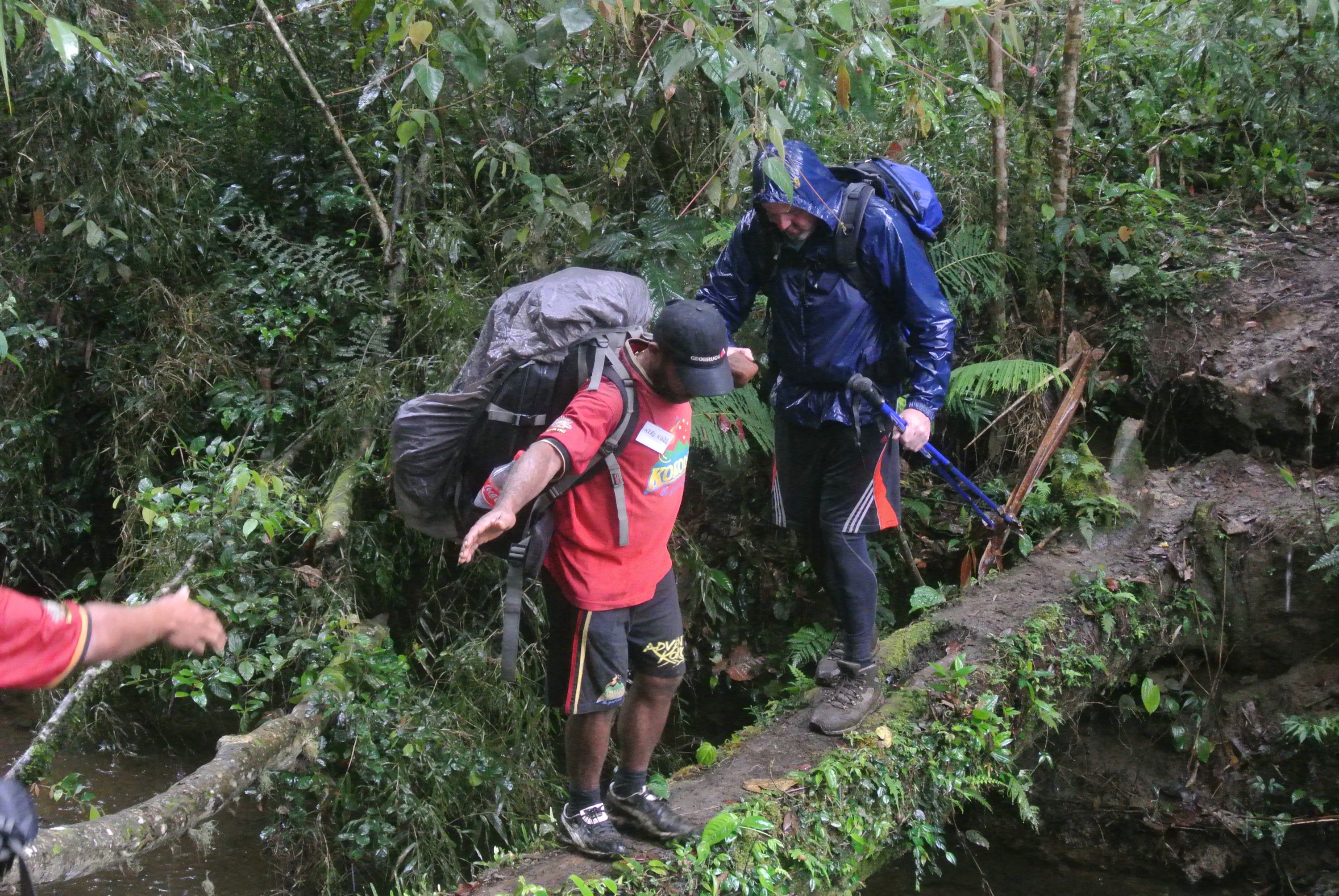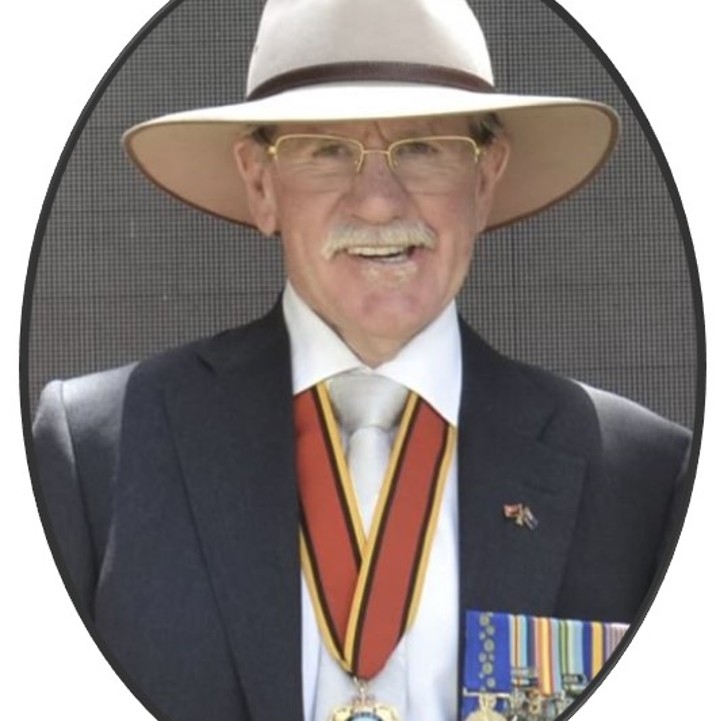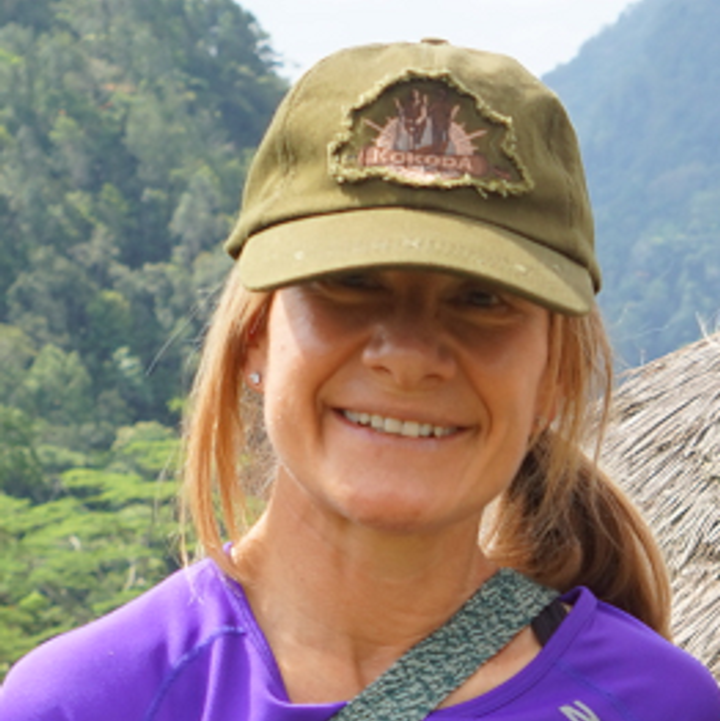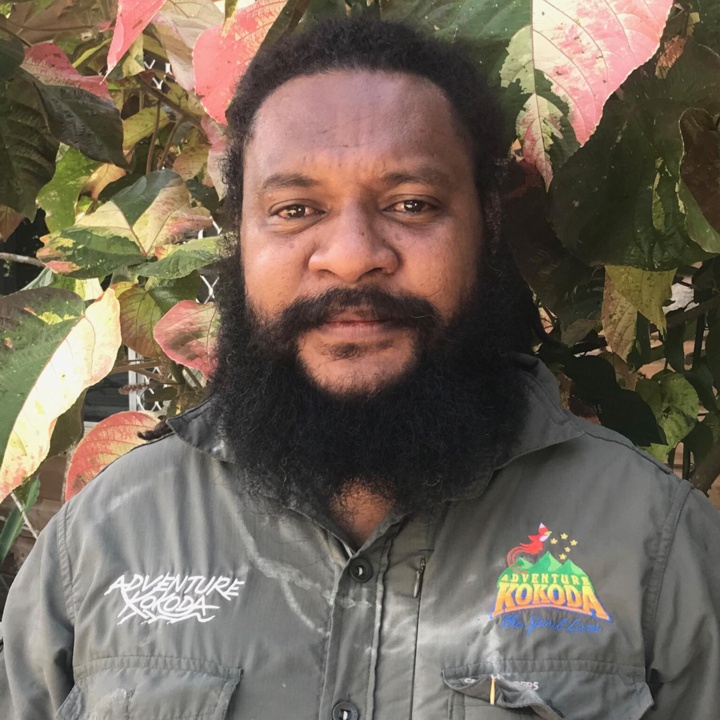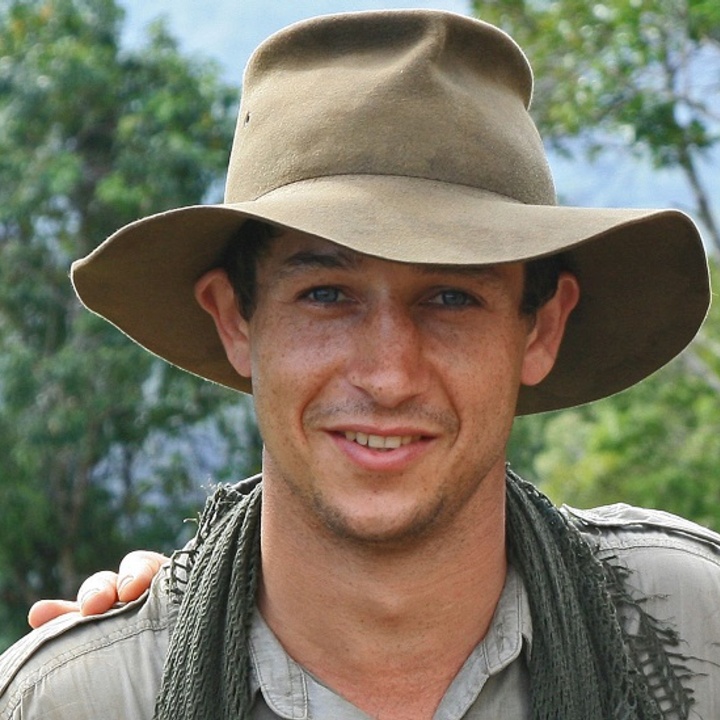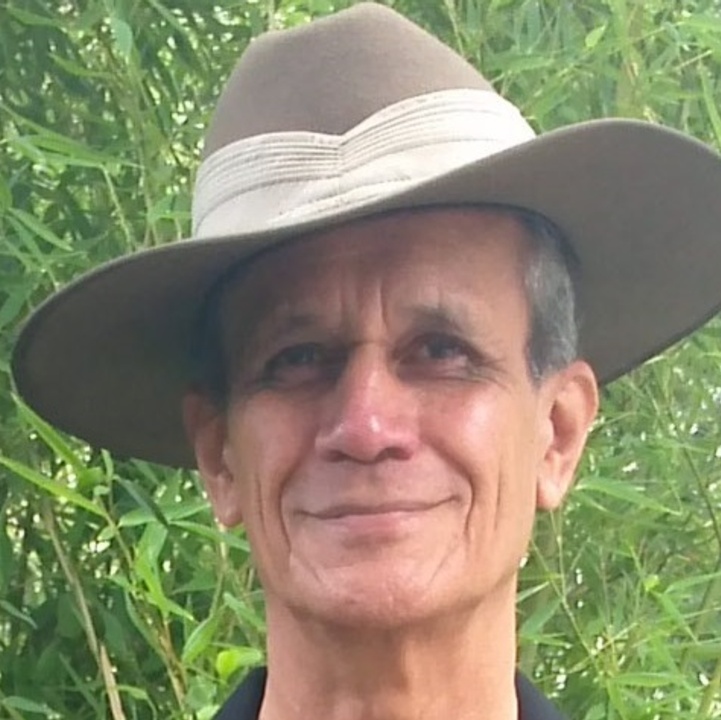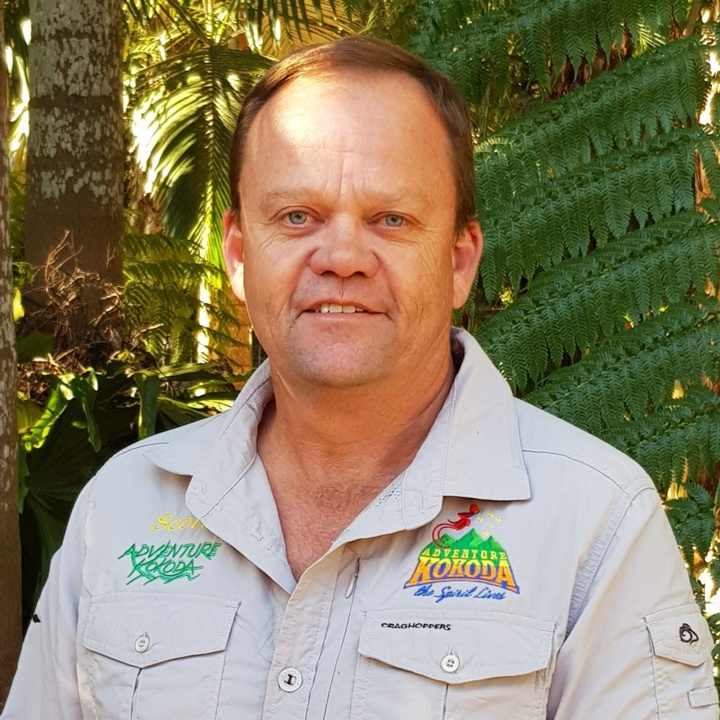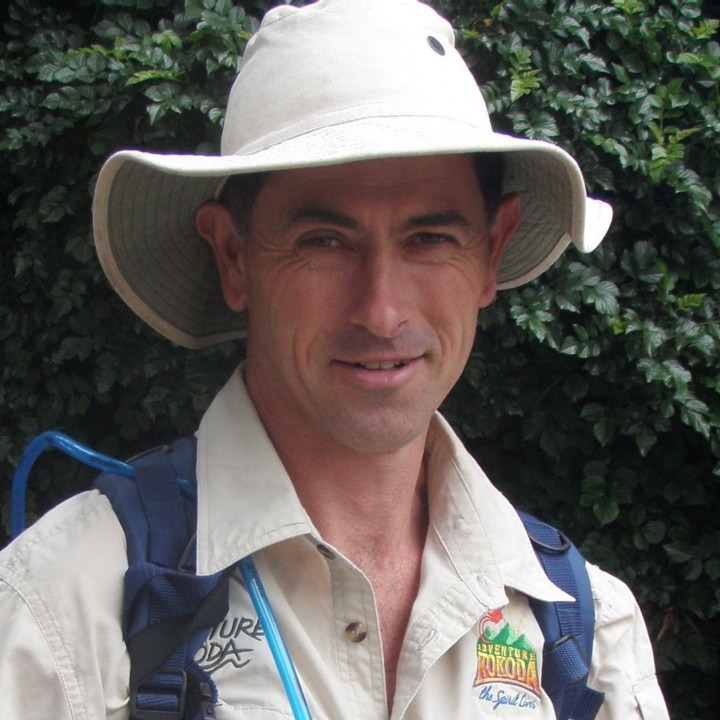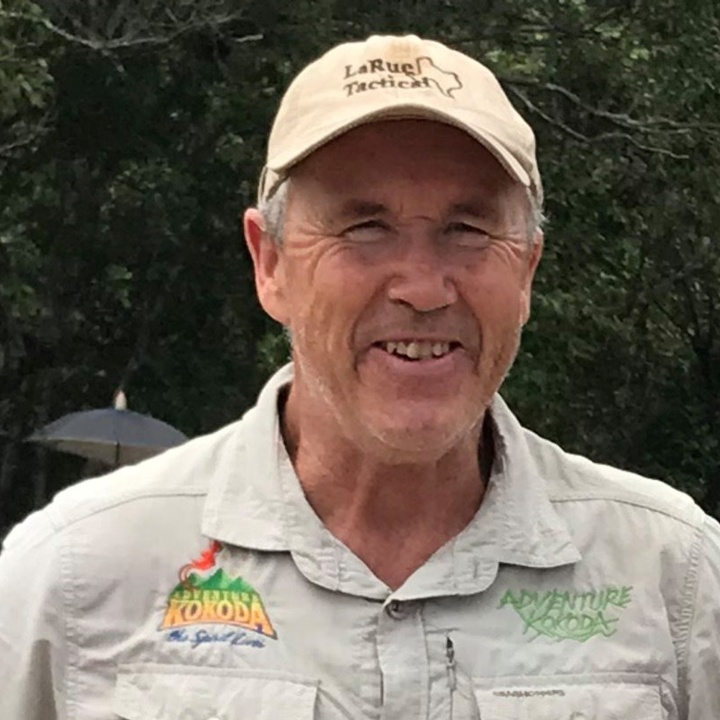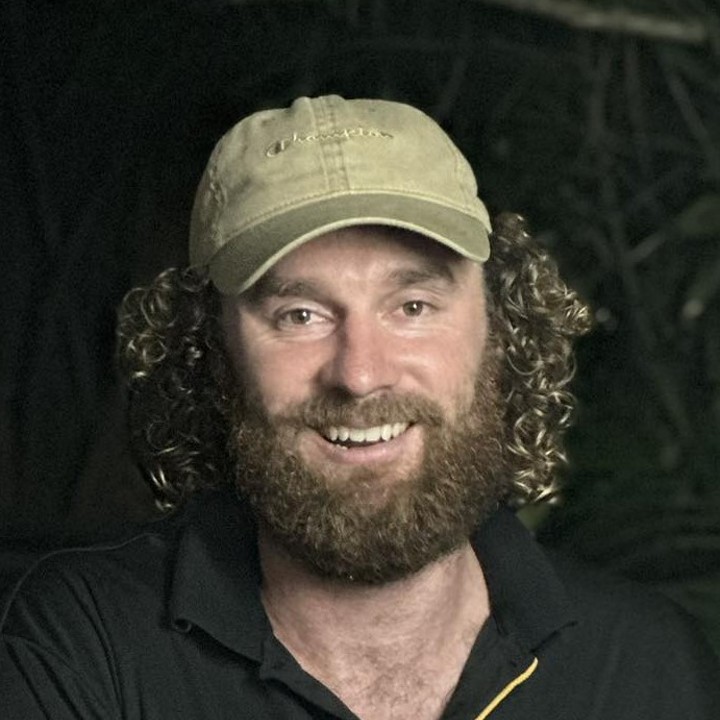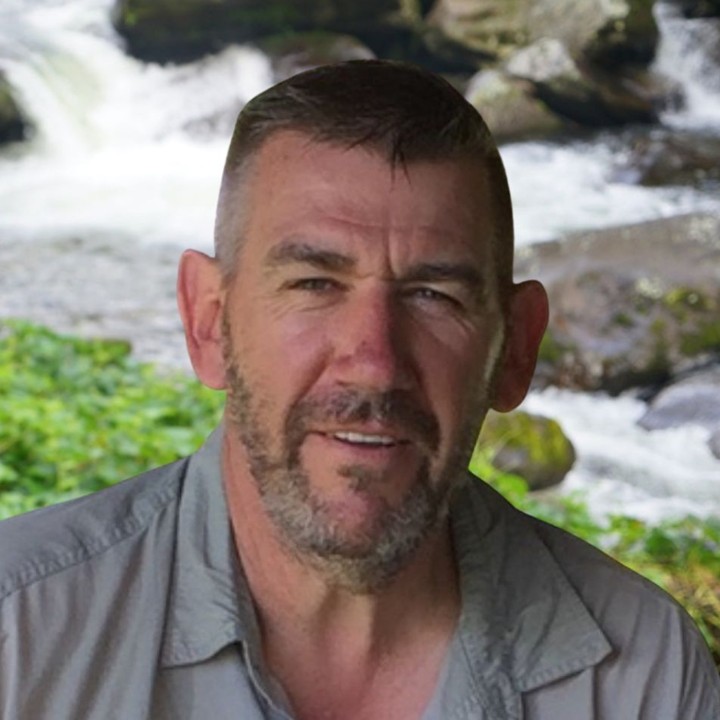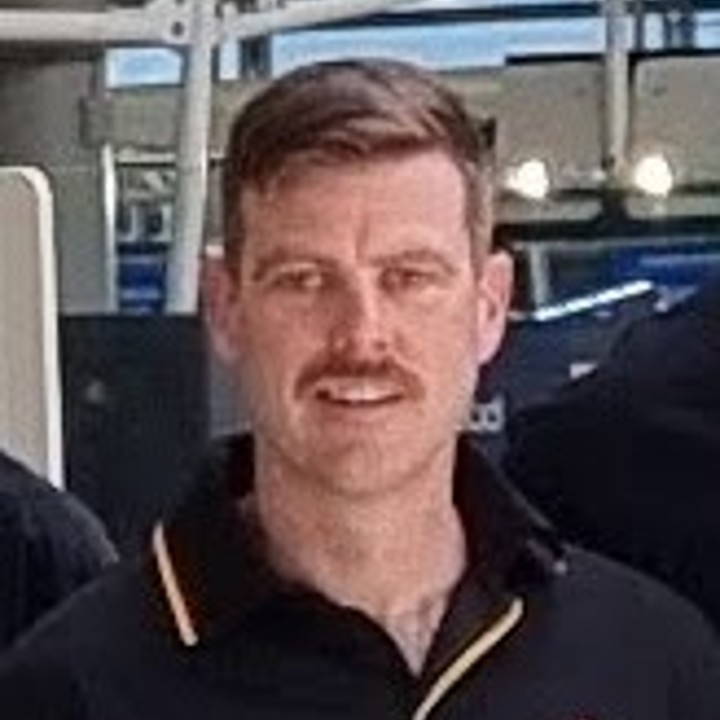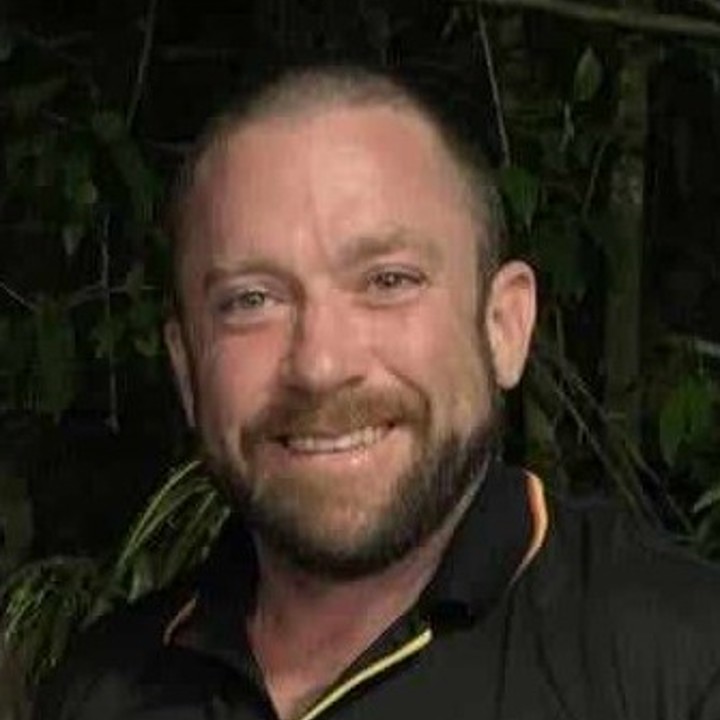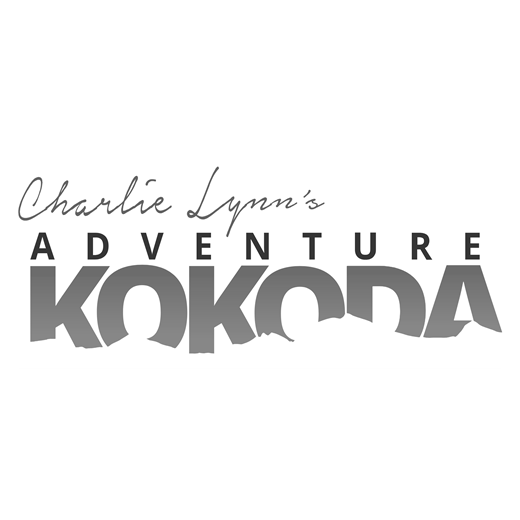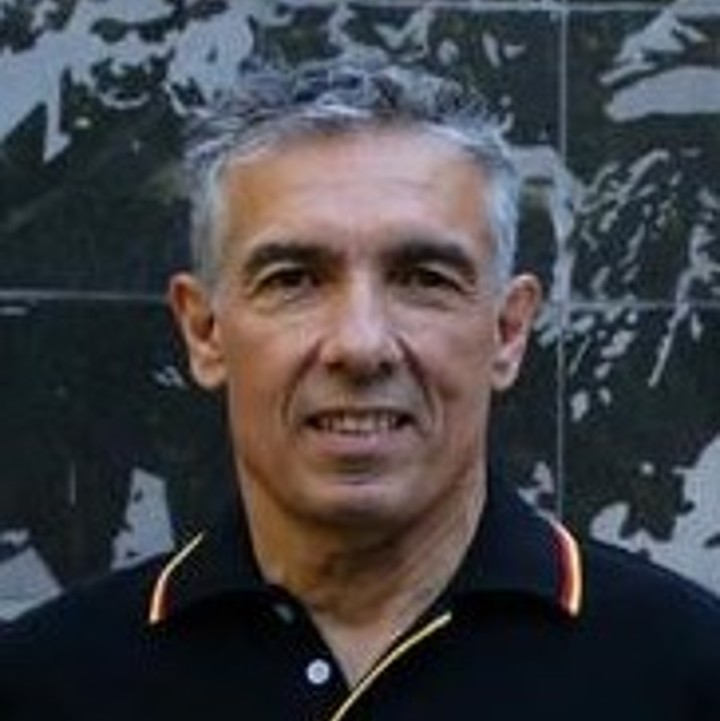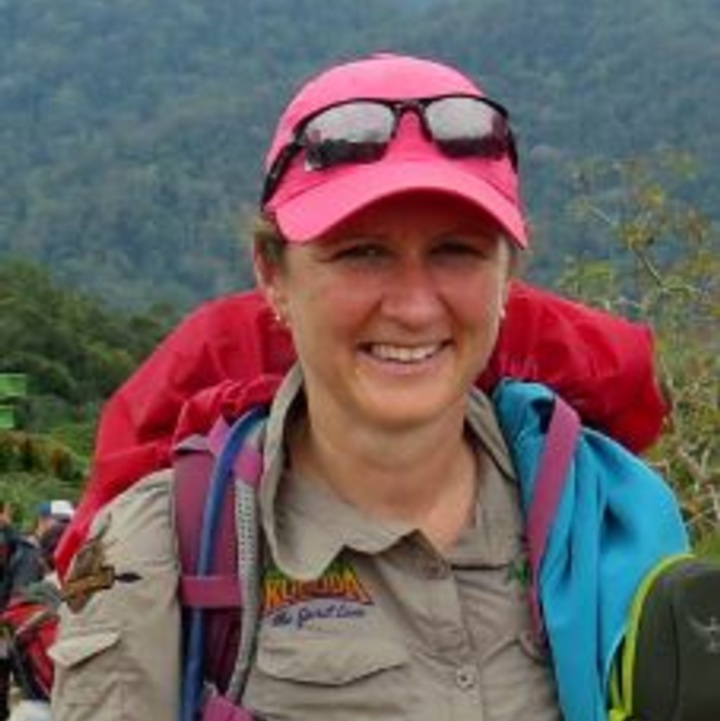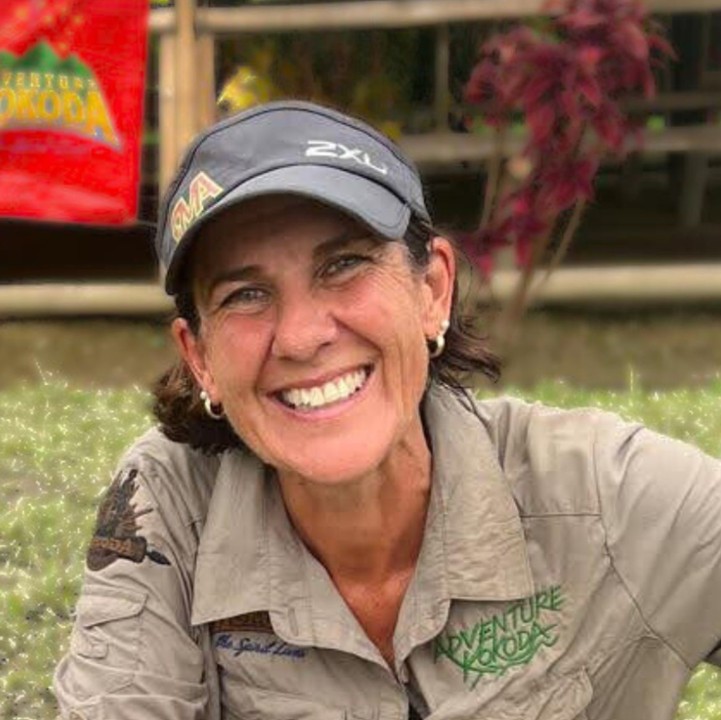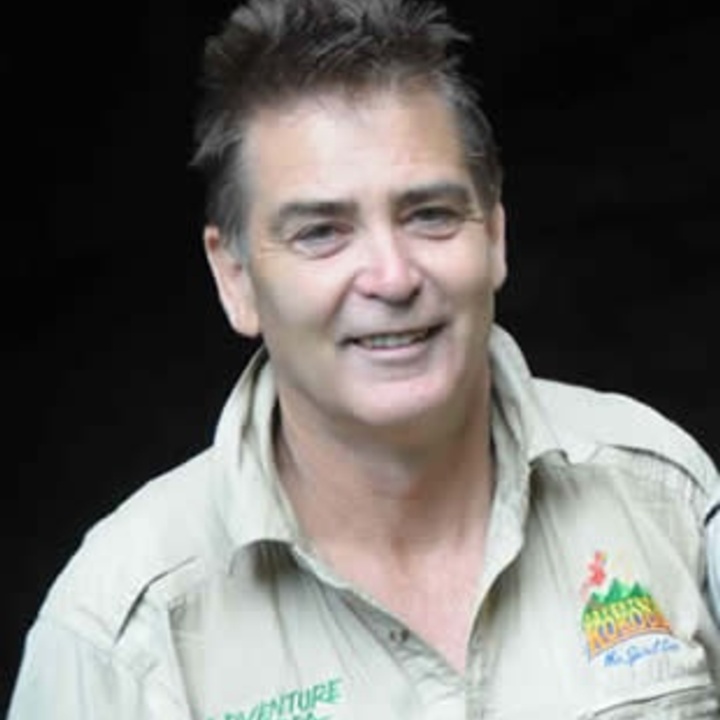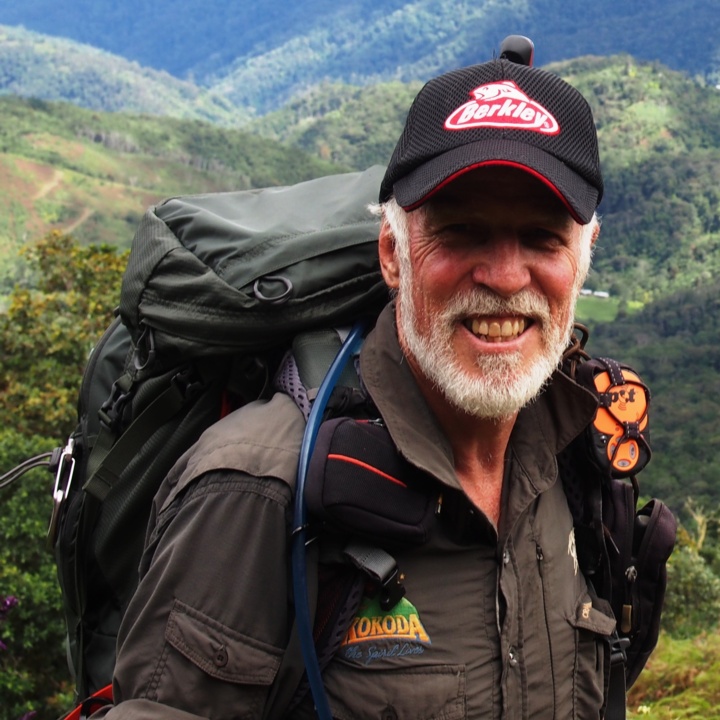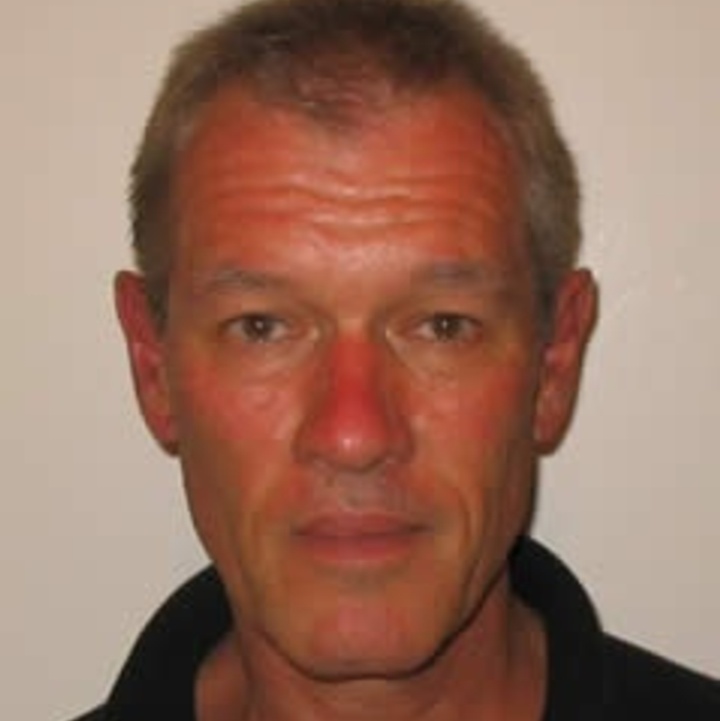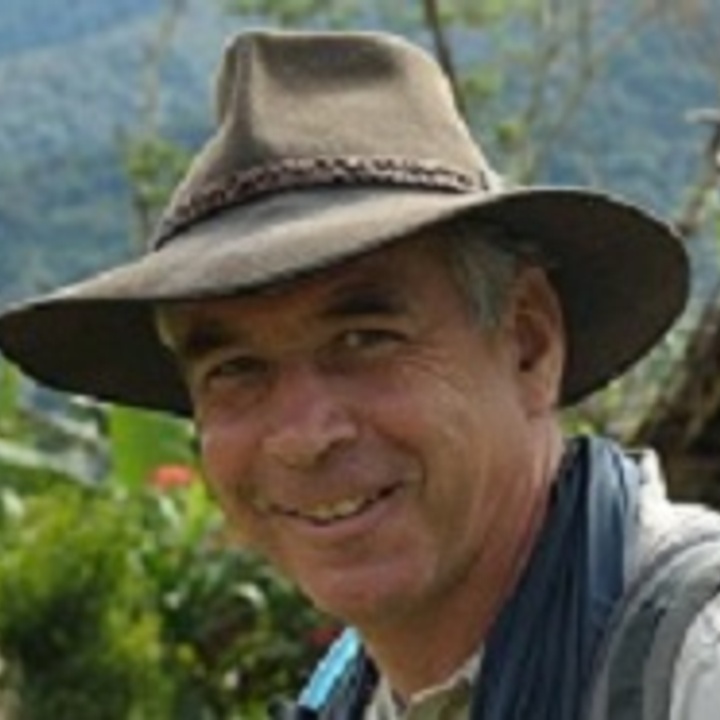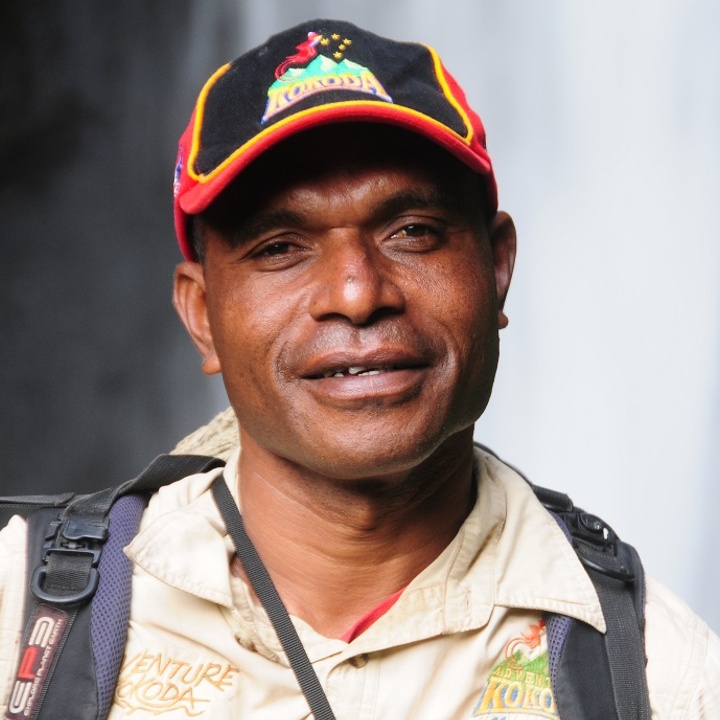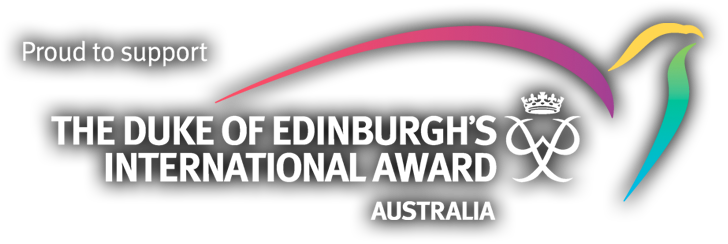
Our PNG guided treks are led by our team of locally trained PNG trek leaders and designed for groups who want to experience the physical challenge of the Kokoda Trail across the original wartime route.
While our PNG trek leaders are masters of their environment and will get you safely across the trail they only have a superficial understanding of the Kokoda campaign strategy and battlefield tactics.
They have been leading treks across the trail for more than 20 years and are well respected by the Koiari and Orokaiva clan leaders across the trail.
Each of our PNG Guided Treks has a local medic trained in First Aid - they also carry two VHF radios and a SatPhone - and have 24/7 back up from our Adventure Kokoda HQ office in Port Moresby.
These treks are best suited for those on a budget who want to experience the physical challenge of the Kokoda Trail the culture of the Koiari and Orokaiva people across it, and a feel for the sacrifice of our diggers who conquered it.
We require a minimum of eight (8) trekkers for these groups.
What's included
- Meals
- All transportation
- All accommodation
- All trek fees
- Mosquito-proof tents
Trek Itinerary
- Flight to Port Moresby
- Charter flight to Kokoda - trek to Hoi Village
- Hoi Village to the Isurava Memorial
- Isurava to Templeton's Crossing
- Templeton's Crossing to Kagi
- Kagi Village to Menari Village
- Menari Village to Ofi Creek
- Ofi Creek to Imita Basecamp
- Imita Base to Owers Corner - Port Moresby
- Day 10: Return Flight - Port Moresby to Australia
Dates & Availability for PNG Guided Treks
Photos from the PNG Guided Treks
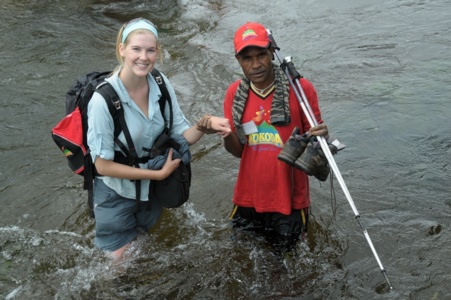
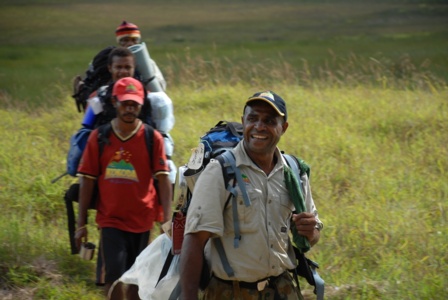
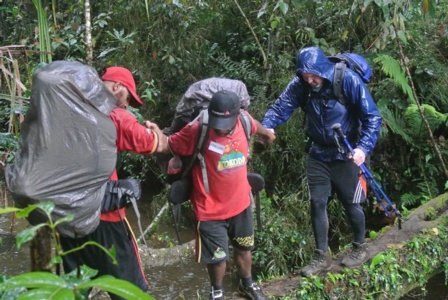
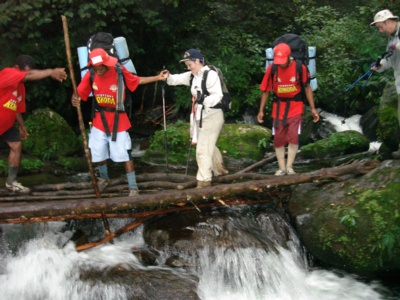
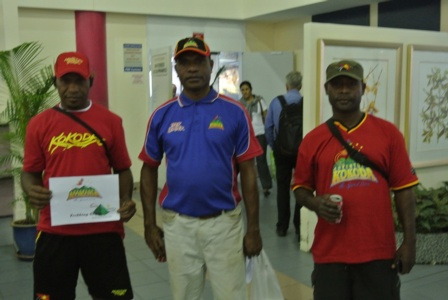
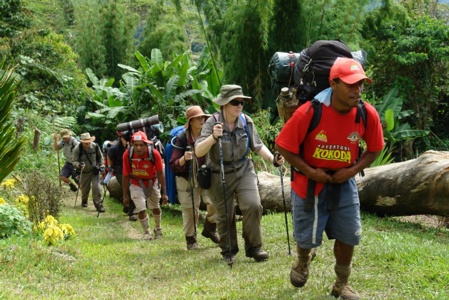
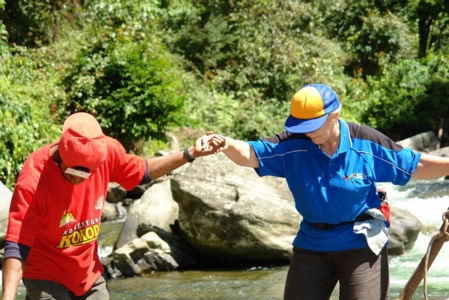
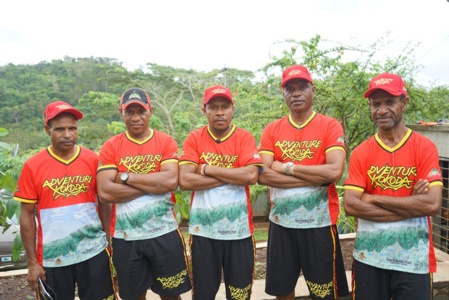
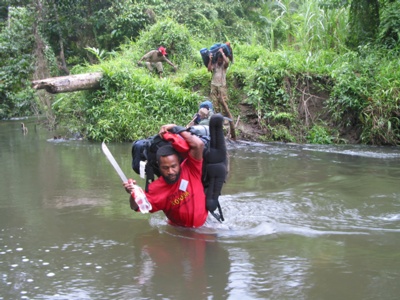
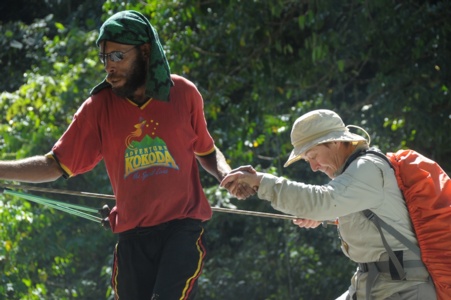
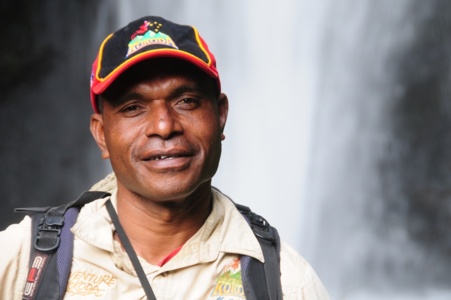
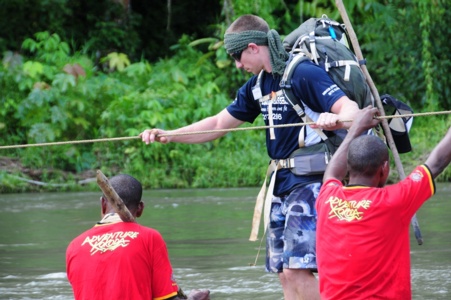
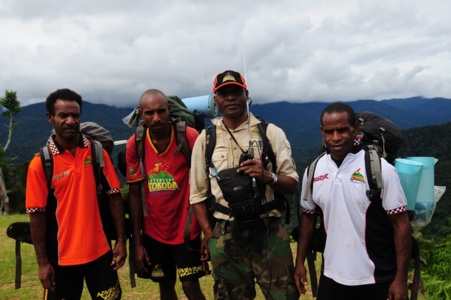
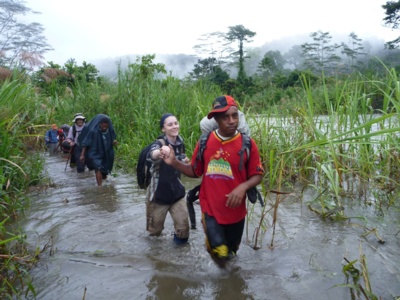
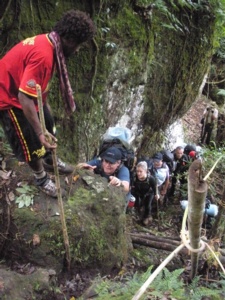
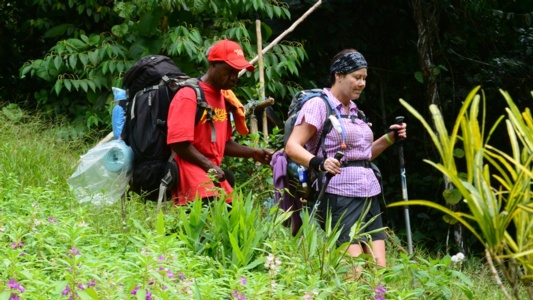
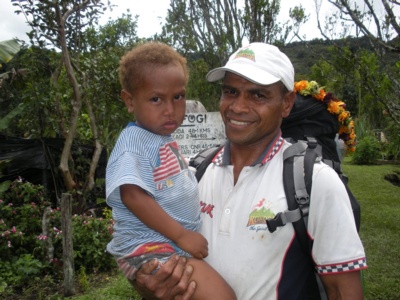
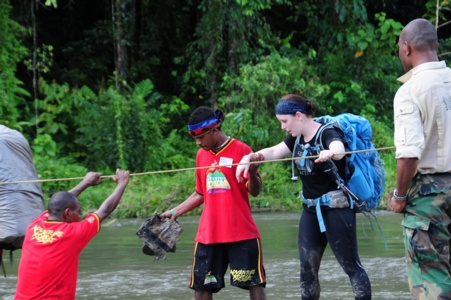
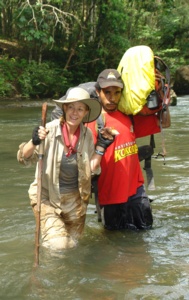
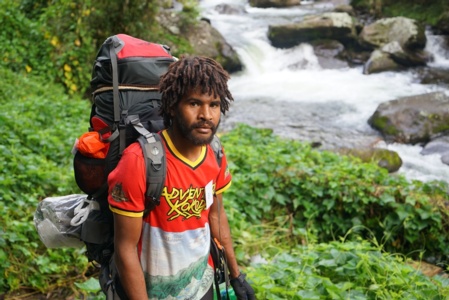
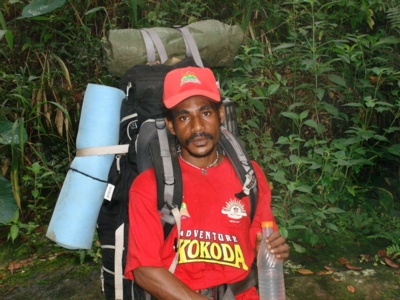
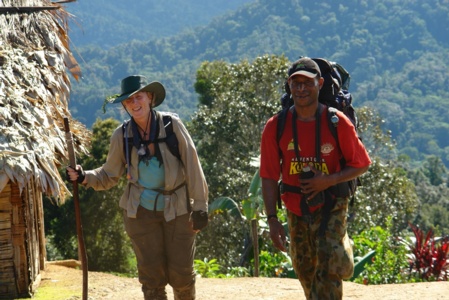
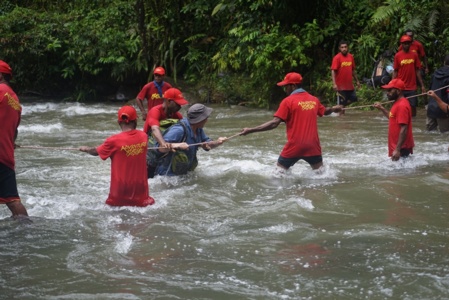
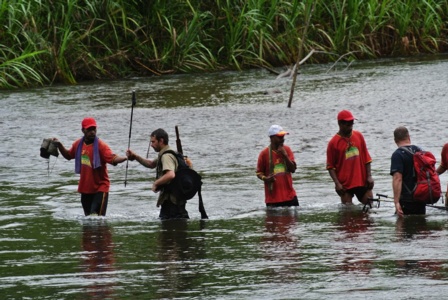
FAQs about this trek
Yes - Adventure Kokoda treks include International economy class return ticket to Port Moresby (for bookings ex-Cairns, Brisbane or Sydney), all accommodation, meals, transport, trek fees etc. The price also includes the provision of a roomy mosquito-proof tent.
If you engage a Personal Carrier, a backpack (75 Litre) is included; otherwise you can hire our backpack for $50.
You will find that some trek operators offer much cheaper treks - you need to check the small print to find out if there are any 'hidden extras' - which is often the case. If you have to pay for additional items or 'hidden extras' such as accommodation and meals in Port Moresby, airfares to/from Kokoda, personal camping equipment etc, then any saving on price can prove to be a false economy. Make sure you check the fine print with the tour operator you choose.
Adventure Kokoda has a strict policy of carrying our rubbish off the track. All rubbish is collected by our PNG guides and carriers from our campsites and carried off the track for disposal.
The trek across Kokoda is the toughest physical challenge most people will encounter.
The decision as to whether to carry your own backpack is important because it can mean the difference between enjoying the experience or suffering and having to withdraw from the trek.
Some trekkers in the past have stubbornly refused to engage a personal carrier because they want to do it like ‘the diggers did it!’
If this is your rationale we suggest you purchase a pair of hobnail leather boots, carry a canvas backpack with webbing pouches; travel with a half-blanket which you will willingly share with up to six other trekkers; borrow a rifle and ammunition; sleep outside your tent and leave your underwear and toiletries at the hotel in Port Moresby!
For those who are young, confident and physically fit it will not be a problem. But for those who lead a sedentary lifestyle; who might be carrying an extra kilo or two; who might be harbouring some self-doubt about their ability to burden themselves with extra weight; or who do not maintain a daily regime of physical training it will be a struggle – you will find the track does not make concessions to anybody! It is therefore important that you do an honest assessment of your physical capabilities.
If you are physically fit, are an experienced extreme conditions trekker, and have prepared yourself with a strenuous training program then you should be able to carry your own pack. On the other hand if you have any doubts about your ability then you should consider engaging a personal carrier for yourself or sharing one with a mate.
If you engage your own Personal Carrier prior to your trek we provide them with a trek uniform and purchase additional food and camping gear for them before we leave Port Moresby – there is none available along the track.
The cost of a Personal Carrier is between $660 - $790 per person, depending on the trek type/duration. The cost will be displayed when completing the online Booking Form.
If you decide to engage one after you arrive an additional $150 surcharge will apply to cover the additional costs we have to incur as short notice.
From time to time we have trekkers who realise they cannot carry their backpack after the second or third day - we then have to try and recruit additional carriers along the trail. This is a difficult exercise in the middle of the Owen Stanley Ranges as we are not able to arrange for additional food, uniforms or camping gear for the additional carriers. It’s also unfair as our PNG trek guides and carriers, who already work hard under extreme conditions, don’t appreciate having the size of their meals reduced whenever we have to engage additional personal carriers during the trek.
A Personal Carrier will carry your backpack and act as your ‘trek caddy’ for the duration of your trek – he will often catch you before you fall; will assist you over the most difficult sections of the trail; assist you with packing up and setting up and proudly introduce you to his family in his village.
The situation is assessed by your trek leader. If it is an emergency the trek leader will contact our Adventure Kokoda base in Port Moresby via satellite phone or VHF Radio. Adventure Kokoda will initiate evacuation by contacting the helicopter company and the travel insurance provider.
The patient will be met by Adventure Kokoda staff on arrival in Port Moresby and transported immediately to the Pacific International Hospital for assessment/treatment. If the situation is deemed urgent we will arrange for an emergency team from the Pacific International Hospital to accompany the helicopter to the site of evacuation on the Kokoda Trail.
Adventure Kokoda was rated as the best Kokoda trekking company on the Kokoda Trail in 2015, 2016, 2017, 2018, 2019, 2020, 2021, 2022 and again in 2023.
What is the Travellers' Choice?
Travellers' Choice (formerley Certificate of Excellence) recognises businesses that earn consistently great reviews.
We are very proud to be rated number one on Tripadvisor for the 9th successive year which shows our commitment to providing an outstanding experience to all our trekkers, ensuring they have an enjoyable, challenging and informative historical and cultural experience among friends.
View Tripadvisor reviews here.
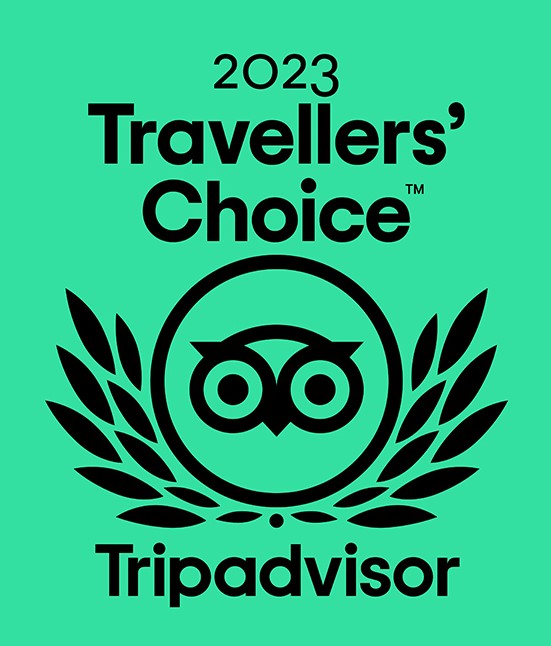
Meet the Trek Leaders
Major Charlie Lynn OAM OL - Director, Adventure Kokoda
In 2015 Charlie was inducted as an Officer of the Logohu by the Government of Papua New Guinea in their New Years Honours and Awards list 'for service to the bilateral relations between Papua New Guinea and Australia and especially in the development of the Kokoda Trail and its honoured place in the history of both nations' over the past 25 years.' More..
Tracie Watson - General Manager
Tracie is the General Manager and engine room of Adventure Kokoda - she is on-call 24/7 and will look after your every need and concern from the moment you book your trek until you arrive back in Australia. More..
Tau Maguli - Quartermaster
Tau Maguli is our PNG Quartermaster with an enormous task, he coordinates the allocation of 350 of our PNG guides and porters to ensure each trek has an equal number from each village across the Trail and each one gets at least six (6) treks a year. More..
Peter Morrison
Peter Morrison is an unassuming young Australian. He first trekked with Adventure Kokoda almost a decade ago and developed a strong desire to learn more about the campaign and the people he met along the trail. Peter is a professional boxer and former NSW Welterweight Champion. More..
Captain Reg Yates
Over the past 34 years Captain Reg Yates has explored most of the WW11 battlesites in PNG. He is fluent in Tok Pisin and is well respected by village elders along the Kokoda Trail. More..
Major Scott Babington
Scott joined the Australian Army as a 16 year old apprentice in 1985. He was promoted through the ranks and has spent over 34 years serving in the Australian Regular Army.
Scott has worked with the United Nations in Sudan as a Military Observer and as an Adviser in Afghanistan with the US 82nd Airborne and the 3rd Infantry Divisions. More..
Dave Sherry
Dave began exploring Australia as soon as he was old enough to escape Sydney. He was born in the city but his heart was in the bush and he now lives on a farm just outside the western country town of Horsham. There are few places in Australia that Dave hasn’t trekked on foot or explored in off-road vehicles. He even took to the sea as a crew member on the Tall Ship HMAS Bounty during the Bicentenary in 1988.
Dave first trekked Kokoda in 2006 and began leading expeditions across the trail in 2011. He has now led more than 35 groups across the trail. More..
Major Craig Moffat OAM
Craig joined the Australian Army in 1979 and was posted to the Royal Australian Infantry Corps where he has served for 40 years with over 20 years serving in Special Operations Command as a Commando.
Craig has seen regimental service as a soldier and officer rising through the ranks within The Royal Australian Regiment and Special Operations Command, his career culminated as soldier with two Regimental Sergeant Major (RSM) appointments prior to commissioning to officer in 2005. More..
Jake Leske
Australia’s Honey Bee. Former Navy sailor, Jake Leske, is more than an outstanding Kokoda trek leader, he is Australia’s original ‘Honey Bee’ and a remarkable endurance athlete. Jake first trekked with Adventure Kokoda to learn more about the Kokoda campaign. He returned as a volunteer 2IC and later led his first trek. More..
Warrant Officer James 'Max' Walker
James ‘Max’ Walker (first trek with Adventure Kokoda Aug 2018 – 2IC Apr 2024).
Max Walker is a former career soldier who first joined the Australian Regular Army as a young apprentice.
During his service, Max was posted to the United Nations in Cambodia and deployed to the Republic of Narau prior to the establishment of the Australian offshore immigration detention facility. More..
Jesse White
Jesse has recently joined our Adventure Kokoda leadership team and comes with outstanding credentials. After visiting PNG over 10 years ago he formed a strong connection with the people, culture and history.
He served as a rifleman with the 2nd Battalion, Royal Australian Regiment, completing multiple specialist courses and multinational exercises, including a deployment to Timor-Leste as part of the International Stabilisation Force. More..
Gerhard Hattingh
Gerhard grew up on cattle stations in the Gulf country and is a natural bushman. He joined the Army in 2000 where he served for 21 years.
He was a specialist Sergeant Gunnery Instructor in the Royal Australian Armoured Corps where he taught soldiers to employ and fight armoured vehicles.
He later transferred to the Australian Army Aviation Corps where he was engaged as an aircrewman and loadmaster in Taipan helicopters. He completed jungle survival courses as part of his qualification for this role. More..
Angelo Tsirekas
Angelo first trekked Kokoda in 2010 and has since trekked it another 10 times with groups he has recruited from the Canada Bay Area. He has been 2IC to Charlie Lynn on his recent treks and has now stepped up to be a trek leader.
He is a former Board Member of the Kokoda Track Memorial Walkway in Concord and was instrumental in establishing the 'Rusty Priest Kokoda Scholarship Program' with students from Rosebank College.
Fiona Foster
Fiona has a strong passion for Kokoda, PNG and its people which was sparked as a young girl knowing her grandfather fought on Kokoda.
As a school teacher Fiona has extensive experience in developing leadership in young Australians and has been involved in the development of a leadership program within the school environment. This saw her bring two passions together; teaching our future generations and Kokoda, whilst getting them outside of their comfort zones, and allowing them to learn about themselves. More..
Bernie Rowell
Bernie is a Kokoda tragic. He first trekked with Kokoda to honour his father who served in New Guinea during the war. He has since trekked it 55 times. Bernie has transposed his success in business to his passion for leading treks across the Kokoda Trail. More..
Major Chad Sherrin MM
Chad is a decorated Vietnam veteran - he was awarded the Military Medal for bravery in action. Chad first joined the 8th Battalion, Royal Australian Regiment (8 RAR) as a tracking dog handler. He was promoted through the ranks to Sergeant while serving with 8 RAR and served with the Battalion in Malaysia and South Vietnam. More..
Lieutenant Colonel Rowan Tracey LLB BA
Rowan is a pioneer of the Kokoda Trail. He first trekked it 30 years ago when he served with the PNG Defence Force. He is fluent in the local language 'Tok Pisin'. Rowan is a military historian and is acknowledged as the most eminent authority on the strategy and tactics of the Kokoda campaign. More..
Commodore Simon Hart CSC MSc MA
Simon joined the Australian Navy a Cadet Midshipmen in 1973 and carved out an outstanding career spanning 33 years. He specialised in maritime surface ship operations and spent the majority of his career at sea. More..
Why Trek with Adventure Kokoda
Our primary goal is to lead you safely across the Kokoda Trail and ensure you have an unforgettable wartime historical and cultural experience.
Charlie has led 101 expeditions across the Kokoda Trail over the past 32 years.
He previously served in the Australian Army for 21 years. During this time he saw active service in Vietnam; was assigned to the joint Australian, New Zealand and British (ANZUK) Force in Singapore/ Malaysia from 1970-72, and as an exchange instructor in Airborne Logistics with the United States Army from 1977-78. He is a graduate of the Army Command and Staff College.
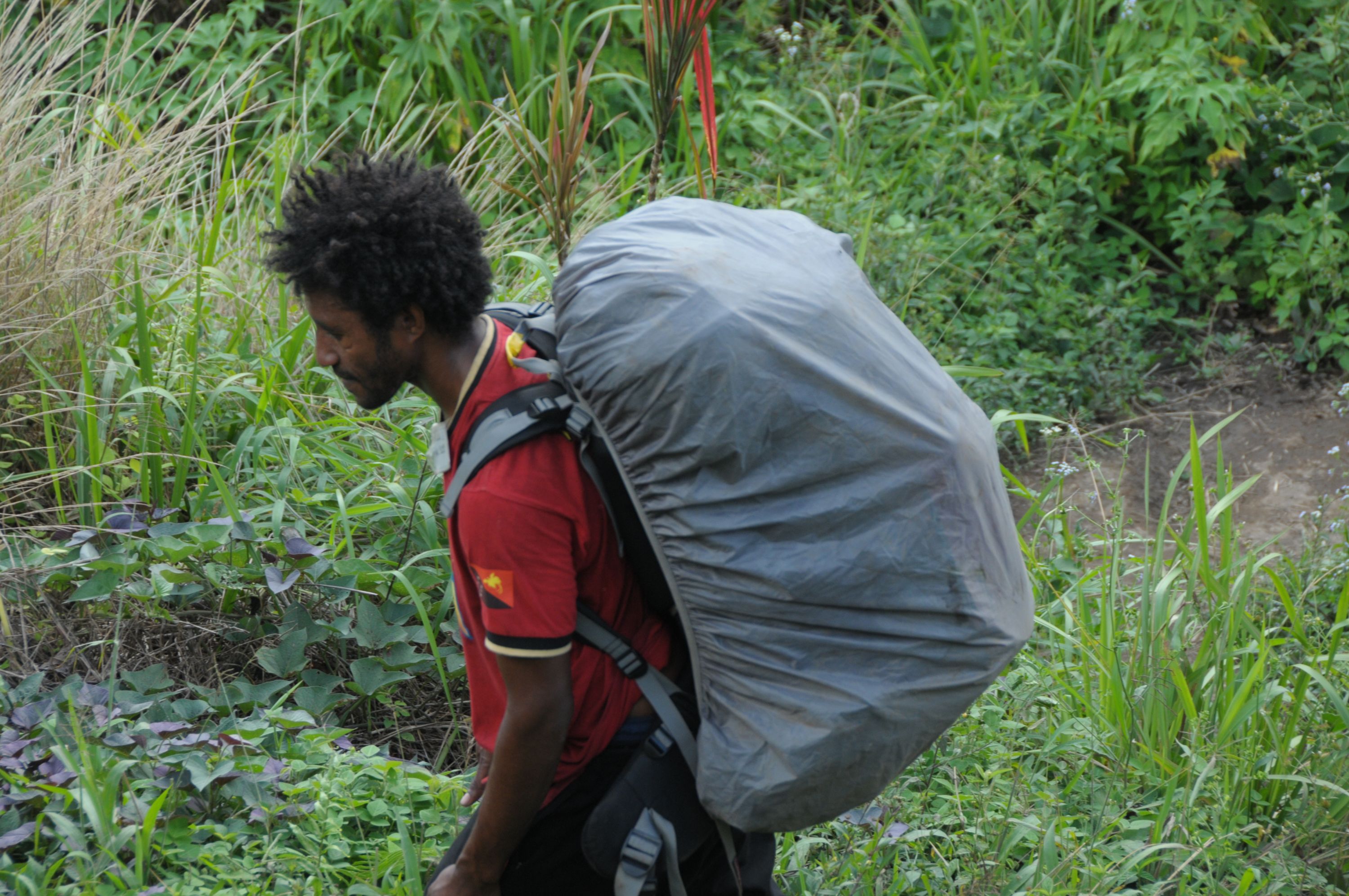
.JPG)
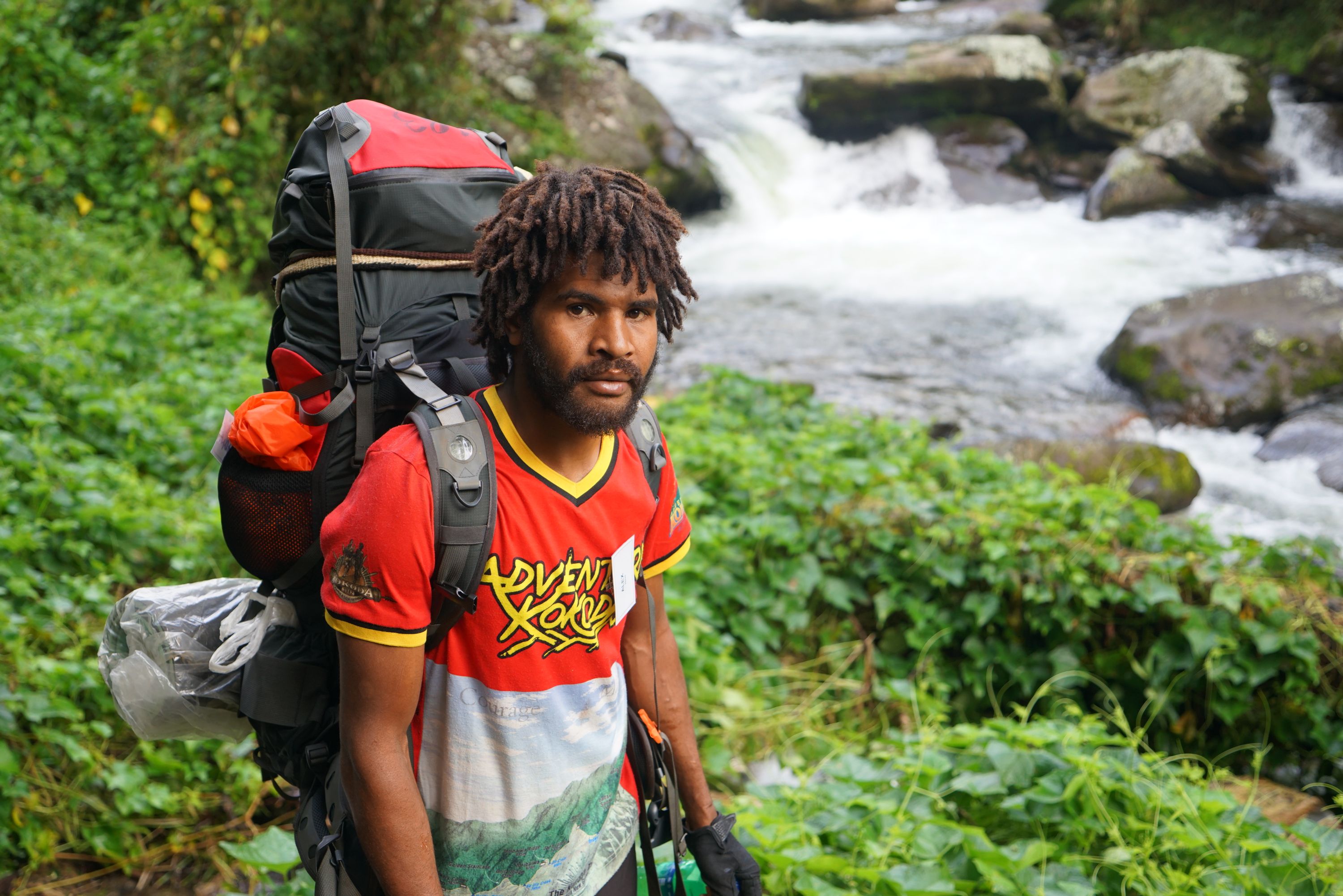
.JPG)
